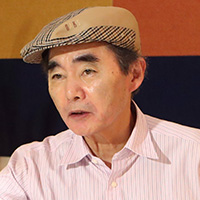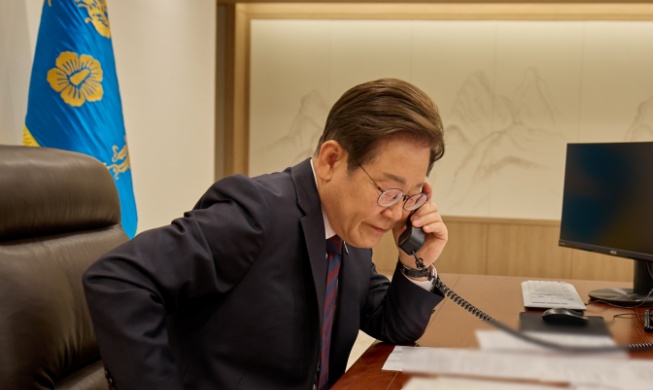| This special op-ed was written by Norio Kuboi, president of the Asia Public History Center in Japan, to criticize the Japanese government's groundless territorial claim to Dokdo Island and distortion of history. This is his second piece following his first titled "1965 bilateral treaty finalized Korean sovereignty over Dokdo" and published on March 1 this year. In his latest contribution, Kuboi rebuts Japan's territorial claim championed by the National Museum of Territory and Sovereignty in Tokyo, the defense white paper of the Japanese government and the authors of the Korean-language book "Anti-Japan Tribalism," which promotes the Abe administration's positions. |

By Norio Kuboi
President of Asia Public History Center
The Japanese government, despite historical records proving Korean sovereignty over Dokdo Island, keeps falsely claiming that the island is part of Japan. In Korea, Lee Yeong-hun and the co-authors of the book "Anti-Japan Tribalism," who support the view of Japan's Abe administration, have made extreme statements like "There is not a speck of evidence proving that Dokdo belongs to Korea." This attitude, however, is simply an attempt at historical deception.
An Yong-bok incident reaffirms Dokdo as Korean territory
An incident in 1693 involving the Korean fisherman An Yong-bok is a major historical case proving the territorial right of Korea, then called Joseon, to Dokdo Island. At the time, the Tokugawa shogunate of Japan acknowledged Dokdo and Ulleungdo islands as Joseon territory after receiving a report from the Tokugawa Domain, where An stayed, saying, "Neither Ulleungdo nor Dokdo is domain territory." The shogunate prohibited passage to the two islands and informed the Joseon court of its ban. This incident thus confirms that both Ulleungdo and Dokdo are Korean territory under international law.
Apart from this incident, another also proves Korean sovereignty over Dokdo. Ulleungdo Jaenggye (鬱陵島 爭界) refers to a border dispute over the island. A Japanese trader named Hachiemon Imazuya from the Hamada Domain ignored the passage ban and sailed without permission to Ulleungdo permission for smuggling purposes, and was later caught and executed. This incident took place in 1836, the seventh year of the Japanese imperial era of Tenpo. Afterwards, Japanese authorities prohibited travel to the island by issuing an official announcement nationwide on the ban and warning of harsh punishment for violators.
Attention is also need to the Order of Dajoukan, or Daijo-kan (太政官指令), of 1877, a historical document in which the Japanese government recorded Dokdo as Korean territory. After Shimane Prefecture asked if it should include Dokdo and Ulleungdo in the prefecture's map, the Dajokan (Grand State Council), the highest-ranking public organization at the time, concluded the matter by saying, "Dokdo and Ulleungdo are Korean territory and both regions have nothing to do with Japan." The council later officially informed the Japanese Ministry of Home Affairs of this decision. This means that the order was an official document quoting the Japanese government's formal position that the two islands were not Japanese territory.
In 1875, a year before the order came, the Complete Map of Joseon published by the advisory bureau of the imperial Japanese army showed both Dokdo and Ulleungdo as part of the Korean Peninsula. This official map was known for its accuracy as it referred to maps from both the West and Joseon. Dokdo was not even marked in the bureau's map of Japan released in 1877 and its map of East Asia in 1879. Neither island was also included in a map of Japan published by the Japanese government in 1881 or its revised version in 1883. And no official map depicted Dokdo as Japanese territory until Japan seized the island through the Russo-Japanese War (1904-05).
Furthermore, it must be noted that in 1900, Joseon Dynasty King Gojong, the first emperor of the Korean Empire, issued Imperial Order No. 41 saying Ulleungdo, its adjacent island of Jukdo and Dokdo belonged to Ulleungdo-gun County and thus clearly Korean territory.
Earlier in 1881, when a report was submitted to the Joseon government about Japanese intrusions into Ulleungdo, Gojong dispatched Yi Gyu-won as his royal inspector to conduct a detailed survey of Ulleungdo and its two adjacent islands and monitor any intrusions by Japanese. This means the emperor was aware of Dokdo and issued a special order. After inspecting Ulleungdo, Yi made a map of the island and informed the king of the inspection results and those on the adjacent islands Jukdo and Gwaneumdo through a report. After the inspection, Gojong took effective control of all the islands through Imperial Order No. 41.
Dokdo is Korean territory that has never been uninhabited. For this reason, Japan's territorial claim to the island is null and void because the doctrine of terra nullius, which grants the occupier of land belonging to no one ownership of the latter, does not apply to Dokdo. The Meiji government’s decision to initially call Dokdo Korean territory and then later claim it as Japanese territory violates the principle of no deliberation of the same measure twice in the same legislative session. This is also a violation of the Meiji constitution and international law.
Korea regained Dokdo after World War II
During the process of devising the Treaty of San Francisco after World War II, Korea asked the U.S. government to specify Dokdo as Korean territory in the draft. In response, Washington rejected the request through the Rusk documents, which were named after then Assistant Undersecretary of Cabinet Dean Rusk.
The letter read, "On the island of Dokdo, otherwise known as Takeshima or Liancourt Rocks, this normally uninhabited rock formation was, according to our information, never treated as part of Korea. Since about 1905, it has been under the jurisdiction of the Oki Islands branch office of Japan's Shimane Prefecture."
This letter, however, only confirmed Japan's act of plundering Dokdo to illegally use it as a strategic military base during the Russo-Japanese War (1904-05) based on the doctrine of terra nullius.
The U.S. then changed its stance on which country owned Dokdo and did not clarify its position. From the first to fourth drafts of the Treaty of San Francisco, however, Dokdo was in the same group of areas excluded from Japan along with Ulleungdo and Jeju Island and categorized as Korean territory. As such, the Japanese government submitted to the Allied Command and the U.S. Department of State a report claiming Dokdo as part of Japan. In the report, Tokyo added the Revised Complete Map of Japanese Lands and Roads by oceanographer Sekisui Nagakubo to claim Japanese control over the island since ancient times. Afterwards, the term "Takeshima" was deleted from the category of excluded Japanese areas in later drafts of the treaty. The finalized agreement released in 1951 contained neither any comment about Dokdo or Takeshima nor the country Dokdo belonged to.
In July this year, the Japanese government alleged that Korea was "illegally securing Takeshima" in a defense white paper, and the National Museum of Territory & Sovereignty was reopened in Tokyo earlier in January. This is stance is wrong. Japan withdrew its territorial claim to Dokdo in the 1965 Korea-Japan Treaty on Basic Relations and a bilateral fisheries agreement, both of which were concluded in June 1965; Tokyo also agreed to tolerate Korean sovereignty over the island. Though Japan has refused to disclose related historical documents citing its Act on the Protection of Specially Designated Secrets, it cannot hide the truth.
Norio Kuboi taught history at the high school level and at Momoyama Gakuin University, He is now chairman of the Territorial Education Research Association and the Group for Rethinking Takeshima Day. His book "The Truth Behind Dokdo" was published in Korea in 2017.
Translated by Korea.net staff writer Yoon Sojung.
Most popular
- Military discharge sets stage for reunion of all 7 BTS members
- BTS to mark 12th anniversary of debut with 2-week festival
- Lee Jae-myung officially sworn in as nation's 21st president
- Presidents Lee, Trump discuss tariff deal in first phone talks
- President's 1st executive order is launch of economic task force
